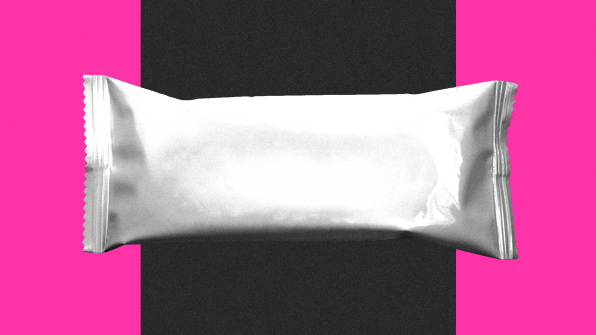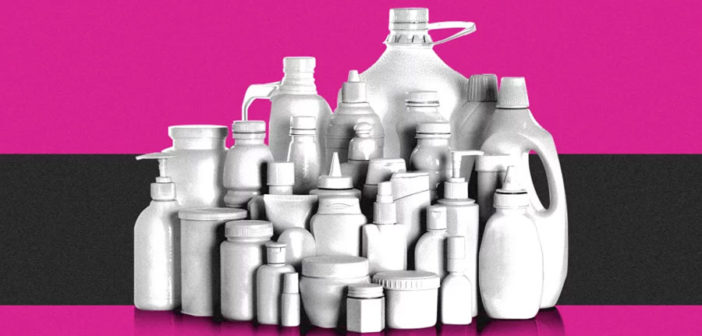Brand-free branding is the latest marketing trend, but it ignores the qualities that makes companies like Patagonia, Glossier, Airbnb, and Nike so compelling.
The latest trend in branding is no branding at all. Countless businesses, from beer makers to grocery companies, are stripping off their logos and sending products out into the world in all their naked glory.
It’s easy to see why. Consumers are demanding more than ever before. We are discerning. We fret about GMOs, sugar, artificial additives and aspartame. We agonize over ethically sourced cotton, chocolate, diamonds, coffee, plastic and countless other things. We’re sick of corporate dishonesty. With Nars testing on animals, Chipotle cooking up e-coli, and VW fixing the results of emissions tests, the road to unbranding is littered with the stories of corporations that have betrayed our trust. Now we can smell bullshit a mile off. According to a recent report, only 23% of consumers in the USA believe that “brands are open and honest,” and that number dips to just 7% in Western Europe.

This is a real challenge for businesses. But unbranding is a wrongheaded solution. Just because consumers have had enough of the way some companies behave, doesn’t mean the role of branding is redundant. Unbranding confuses the symptoms of mass consumer branding with the cause.
UNBRANDING IS MORE CHOICE FATIGUE
Recently a business called Brandless launched in the United States. Brandless sells household goods direct to consumers that are free of “brand tax” – the 40% premium it estimates consumers pay for that intangible aura that makes the difference between a mere product and a brand. Its founders saw people increasingly “paralyzed by the paradox of choice,” and in response Brandless, focuses on the attributes consumers care about–ingredients, benefits, uses–over the brand itself. The packaging features the product name and a brief list of values like “gluten-free,” “organic,” and “no artificial colors” in a simple white box.
The logic behind Brandless isn’t wrong. But now imagine every company applies that insight. Who wants to choose between 10 identical products by scrutinizing 10 ingredient lists? Life’s too short. I might care about what goes into my shampoo, but that doesn’t mean I want to spend hours of my life researching it. Unbranded goods don’t resolve the issues of choice fatigue. In fact, they could make it worse.Proponents of the unbranding movement forget that brands have a valuable role to play in the lives of consumers–they make choosing easy. Brands are designed to be shortcuts to the decision-making process: they allow us to choose habitually; they allow us to function on auto-pilot. Which leaves us all with a bit more time in life for the things we do actually care about.
UNBRANDING IS… BRANDING
The bigger problem is that unbranding is still branding. Brandless, for instance, is quite a compelling brand. It has an idea, a purpose, a set of values, a visual language, and it even has a logo. Like any mainstream brand, it is in the business of emotional persuasion.
So how are consumers supposed to square the paradox of brand-free branding? Isn’t that more of the dishonesty consumers have come to loathe? Brandless, for its part, has taken care to build some of self-awareness into the packaging; the company’s logo appears with a TM on each product. And as Emily Heywerd of the New York agency that designed Brandless’s packaging and identity told Co.Design last year: “Of course Brandless is a brand. We didn’t want that to ring false because that’s against the company’s philosophy.”
But you can imagine unbranding going awry in the hands of a less mindful brand. When businesses try too hard to convince us that they share our values, it can backfire. Just ask Pepsi.
A WAY FORWARD
So what’s a brand to do? Consumers need branding to help make quick, easy, confident decisions. We need emotional shortcuts that help us survive the ordeal of a supermarket trip or session on Amazon. That won’t change until the human brain, with its subconscious, irrational hardwiring, changes.
But brands can still adjust their strategy. In the age of radical transparency, integrity and honesty are table stakes, not a differentiating factor. The best brands, then, develop great products, then let the products speak for themselves.
To be clear: That is not the same thing as stripping away all branding. The trick is for brands to lean into what makes their products great. Patagonia equips consumers to buy ethical fashion and be part of a movement to protect our planet. Digital-first cosmetics brand Glossier cultivates a community that keeps customers loyal. Airbnb allows consumers to “live like a local” no matter where they are. Nike empowers athletes to “just do it.” All of these brands share three attributes: They have integrity that earns users’ trust, they have a purpose people can get behind, and they make lives better in some way.
In a speech he gave in 2017, Yuval Harrari said that “as a historian, there are two things I can tell you about the past. One, it wasn’t that good, and two, we can’t go back.” So, perhaps businesses should spend less time trying to recapture the purity of some pre-branding age, and focus on designing brands that help us improve our future.
–
This article first appeared in www.fastcodesign.com
Seeking to build and grow your brand using the force of consumer insight, strategic foresight, creative disruption and technology prowess? Talk to us at +9714 3867728 or mail: info@groupisd.com or visit www.groupisd.com


